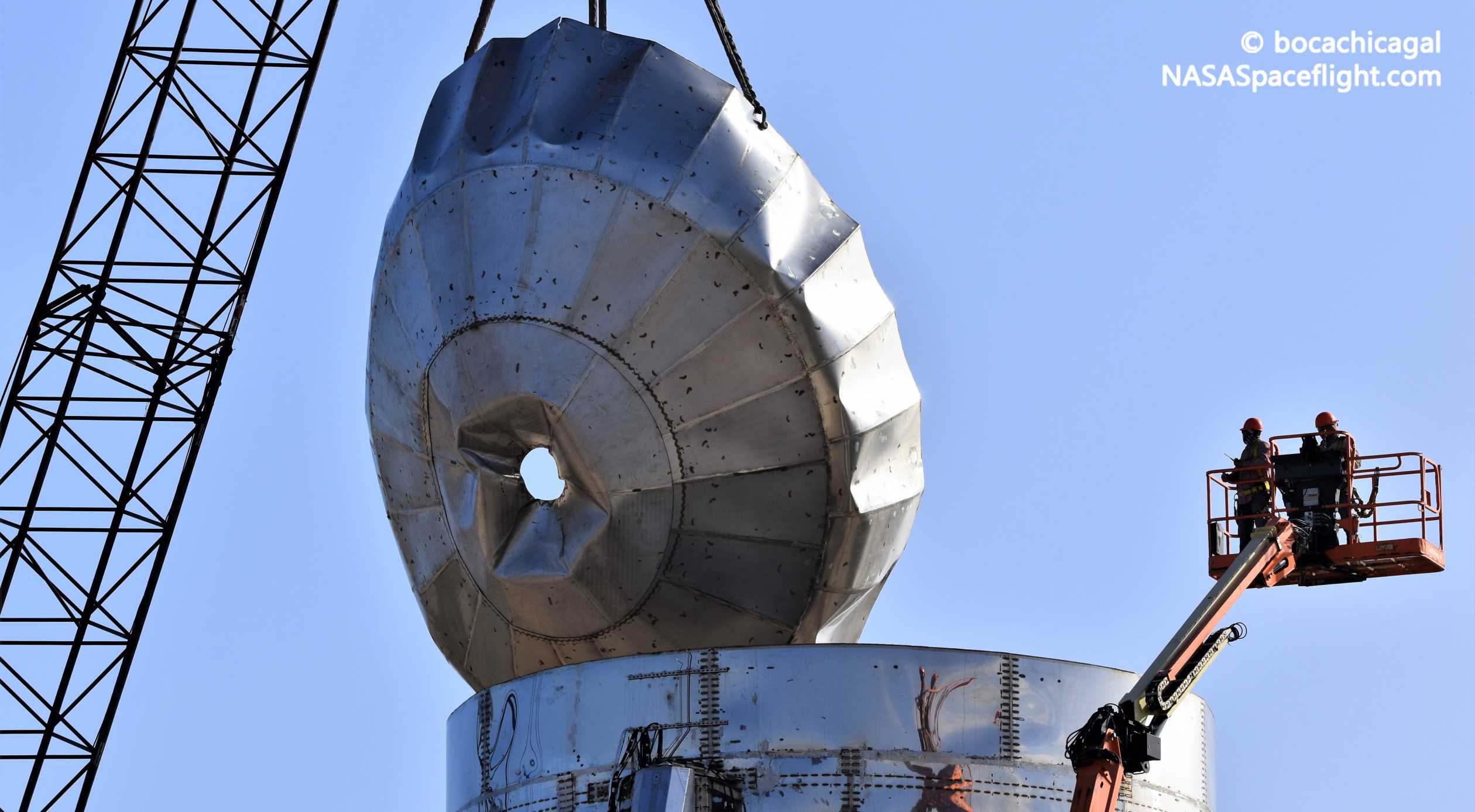
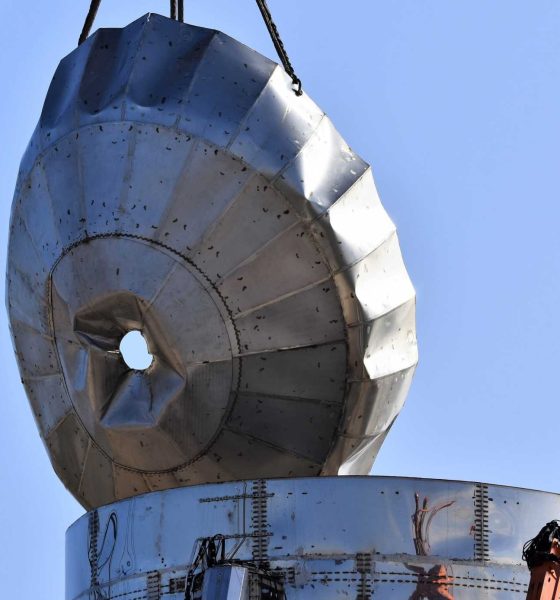
News
SpaceX scraps first Starship prototype to make way for new and improved rockets
A bit less than a month after SpaceX’s first full-scale Starship prototype was partially destroyed during testing, the damaged rocket has been almost completely scrapped to make way for new and improved Starships.
On November 20th, SpaceX effectively tested the Starship Mk1 – the first full-scale prototype – to destruction, pressurizing the rocket’s tank section (lower half) until it quite literally popped its top. The pressure wave that failure created damaged almost every internal component of the massive vehicle, all but guaranteeing that SpaceX would have to scrap the vehicle and move on to new prototypes.
Those future prototypes will take advantage of the many, many lessons learned from Starhopper’s two test flights and several additional grounded tests, as well as the many learning experiences presented through Starship Mk1’s pathfinder manufacturing, assembly, and test campaign. As is SpaceX’s signature, the company is choosing to learn by building actual hardware and making the inevitable mistakes that come hand in hand with such an eccentric and ambitious program.
Above all else, SpaceX is trying to redefine the minimum infrastructure needed to build high-performance launch vehicles at a scale comparable to or even larger than NASA’s Saturn V, the largest rocket ever successfully launched. Modern rockets like Falcon 9 and Atlas V are built in relatively clean and environmentally-controlled environments and Saturn I and V – while quite a bit less sterile – were at least built inside large hangar-like facilities.
With Starship, SpaceX instead wants to build rockets even larger than Saturn V out in the elements and with a far more common (and thus affordable) workforce, (theoretically) made possible in large part thanks to its extensive use of stainless steel. Case in point, Starhopper – a low-fidelity Starship test bed – was quite literally welded together on the South Texas coast by welders far more familiar with building water towers. While not without its teething pains, Starhopper proved to be incredibly sturdy and resistant to anomalous behavior and successfully performed two separate flight tests in July and August 2019.
Three months after Starhopper’s second and final hop test, SpaceX’s Starship Mk1 tank section – the lower half of the rocket – was moved to the launch site and began a series of tanking tests. The first few tests were completed successfully and focused on searching for leaks with a neutral cryogenic liquid (likely liquid nitrogen). After the majority of those leaks were sealed, SpaceX moved into liquid oxygen load testing a few days later. For unconfirmed reasons, it turned out that that first liquid oxygen pressure test would also be Starship Mk1’s last.
On November 20th, SpaceX pressurized Starship Mk1 to its limits, with almost all of the visible creases and wrinkles in its steel surface visibly smoothing out as the supercool liquid oxygen caused frost to form on the exterior. Ultimately, SpaceX pushed the vehicle beyond its limits and its uppermost tank dome quite literally popped off of Starship’s tank section, whether the overpressure event was intentional or unexpected. The force of that overpressure event essentially sent a shockwave through Starship, crushing and warping its two remaining tank domes and transfer tubes like an aluminum soda can.
In simpler terms, very few parts of Starship Mk1 escaped unharmed, all but guaranteeing that it would not be worth the effort to repair it. Instead, SpaceX has almost entirely scrapped the prototype over a period of two weeks. According to an official statement released shortly after Mk1’s failure, SpaceX will attempt to recover and reuse as much of Mk1 as it can and those few salvageable parts will be added to an entirely new prototype, deemed Starship Mk3.
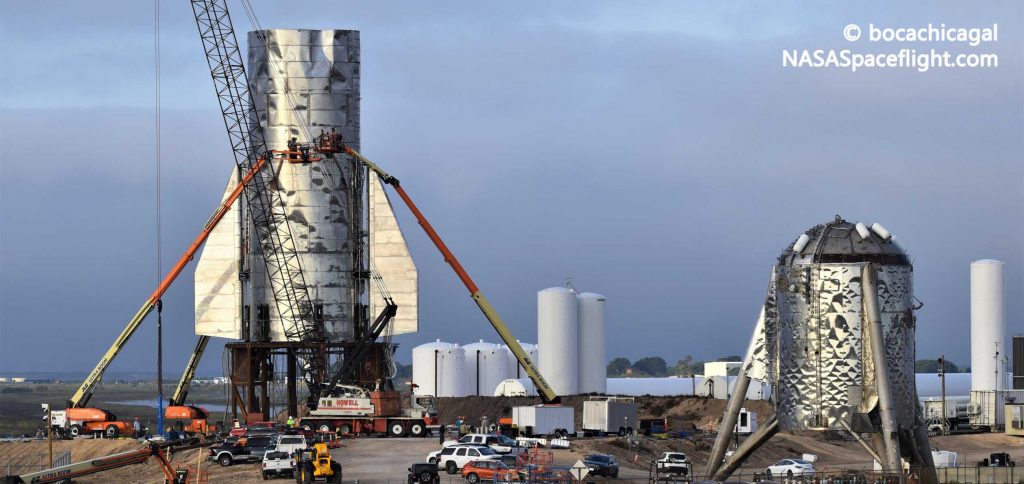
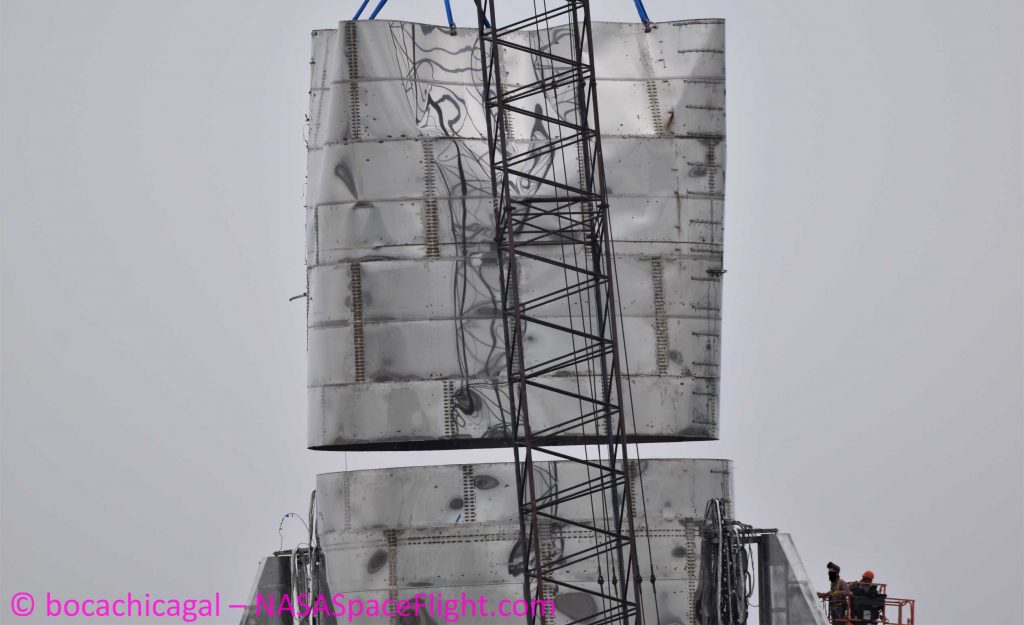
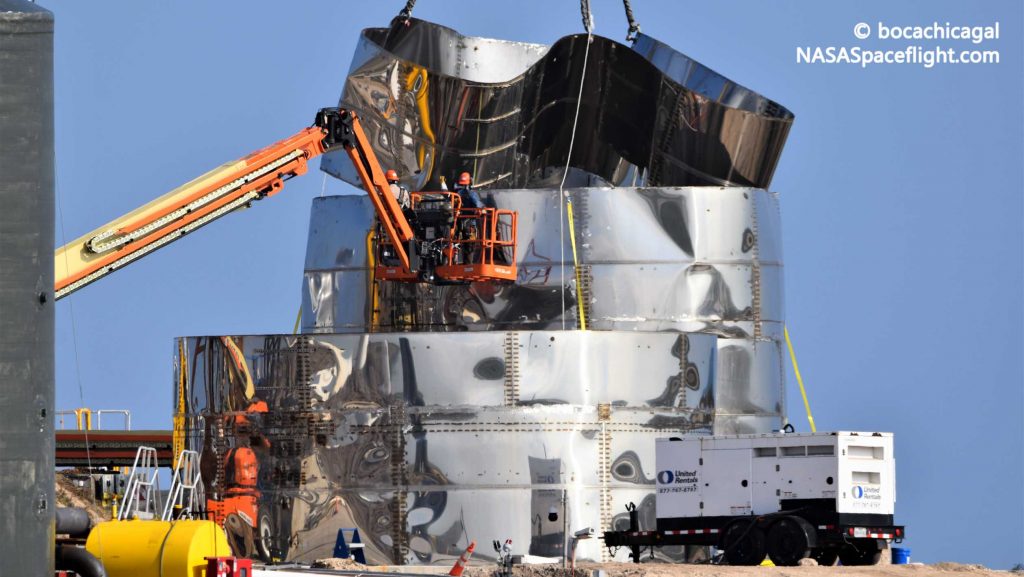
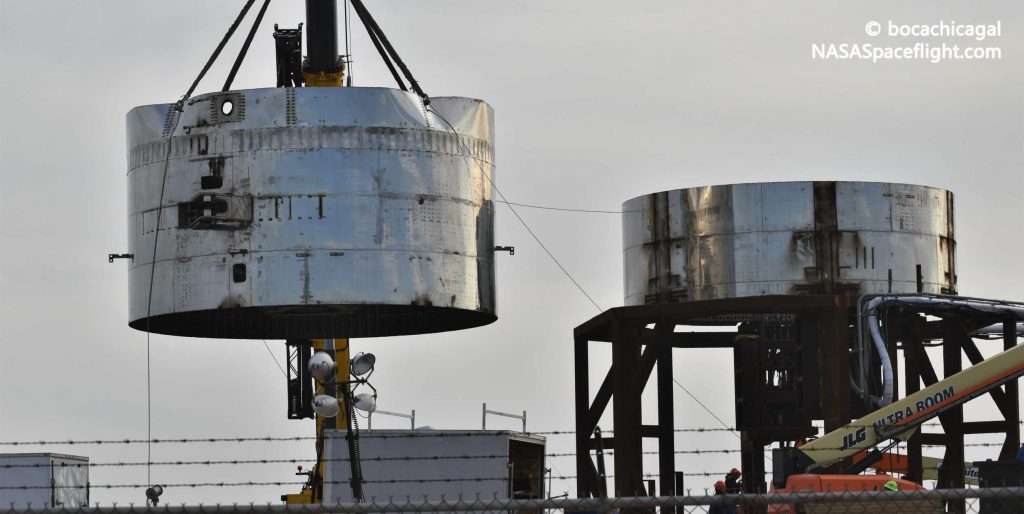

Although it’s disappointing that Starship Mk1 was unable to perform any kind of Raptor engine testing, let alone flight tests, it’s safe to say that the pathfinder prototype has been well worth the time and effort it took to build. Regardless of flight or engine testing, a ton of Mk1’s value lies in its utility as a hands-on, physical testbed for SpaceX employees to perform experiments and learn how to build steel rockets – and build them outside in less than friendly weather conditions.
SpaceX is in the midst of rapidly expanding its presence in Boca Chica, Texas, including a new launch control center, an expanded landing and launch pad, new production facilities, and more. The company has also just begun churning out numerous monolithic (single-weld) steel rings that will likely become part of Starship Mk3 in the near future. It will likely be several months before that next-generation prototype is as close to completion as Starship Mk1 was, but it should be well worth the wait and well worth its predecessor’s sacrifice.
Check out Teslarati’s Marketplace! We offer Tesla accessories, including for the Tesla Cybertruck and Tesla Model 3.

News
Tesla FSD V14.2.1 is earning rave reviews from users in diverse conditions
Tesla’s Full Self-Driving (Supervised) software continues its rapid evolution, with the latest V14.2.1 update drawing widespread praise.

Tesla’s Full Self-Driving (Supervised) software continues its rapid evolution, with the latest V14.2.1 update drawing widespread praise for its smoother performance and smarter decision-making.
Videos and firsthand accounts from Tesla owners highlight V14.2.1 as an update that improves navigation responsiveness, sign recognition, and overall fluidity, among other things. Some drivers have even described it as “more alive than ever,” hinting at the system eventually feeling “sentient,” as Elon Musk has predicted.
FSD V14.2.1 first impressions
Early adopters are buzzing about how V14.2.1 feels less intrusive while staying vigilant. In a post shared on X, Tesla owner @LactoseLunatic described the update as a “huge leap forward,” adding that the system remains “incredibly assertive but still safe.”
Another Tesla driver, Devin Olsenn, who logged ~600 km on V14.2.1, reported no safety disengagements, with the car feeling “more alive than ever.” The Tesla owner noted that his wife now defaults to using FSD V14, as the system is already very smooth and refined.
Adverse weather and regulatory zones are testing grounds where V14.2.1 shines, at least according to testers in snow areas. Tesla watcher Sawyer Merritt shared a video of his first snowy drive on unplowed rural roads in New Hampshire, where FSD did great and erred on the side of caution. As per Merritt, FSD V14.2.1 was “extra cautious” but it performed well overall.
Sign recognition and freeway prowess
Sign recognition also seemed to show improvements with FSD V14.2.1. Longtime FSD tester Chuck Cook highlighted a clip from his upcoming first-impressions video, showcasing improved school zone behavior. “I think it read the signs better,” he observed, though in standard mode, it didn’t fully drop to 15 mph within the short timeframe. This nuance points to V14.2.1’s growing awareness of temporal rules, a step toward fewer false positives in dynamic environments.
FSD V14.2.1 also seems to excel in high-stress highway scenarios. Fellow FSD tester @BLKMDL3 posted a video of FSD V14.2.1 managing a multi-lane freeway closure due to a police chase-related accident. “Perfectly handles all lanes of the freeway merging into one,” the Tesla owner noted in his post on X.
FSD V14.2.1 was released on Thanksgiving, much to the pleasant surprise of Tesla owners. The update’s release notes are almost identical to the system’s previous iteration, save for one line item read, “Camera visibility can lead to increased attention monitoring sensitivity.”
News
Tesla FSD Supervised ride-alongs in Europe begin in Italy, France, and Germany
The program allows the public to hop in as a non-driving observer to witness FSD navigate urban streets firsthand.

Tesla has kicked off passenger ride-alongs for Full Self-Driving (Supervised) in Italy, France and Germany. The program allows the public to hop in as a non-driving observer to witness FSD navigate urban streets firsthand.
The program, detailed on Tesla’s event pages, arrives ahead of a potential early 2026 Dutch regulatory approval that could unlock a potential EU-wide rollout for FSD.
Hands-Off Demos
Tesla’s ride-along invites participants to “ride along in the passenger seat to experience how it handles real-world traffic & the most stressful parts of daily driving, making the roads safer for all,” as per the company’s announcement on X through its official Tesla Europe & Middle East account.
Sign-ups via localized pages offer free slots through December, with Tesla teams piloting vehicles through city streets, roundabouts and highways.
“Be one of the first to experience Full Self-Driving (Supervised) from the passenger seat. Our team will take you along as a passenger and show you how Full Self-Driving (Supervised) works under real-world road conditions,” Tesla wrote. “Discover how it reacts to live traffic and masters the most stressful parts of driving to make the roads safer for you and others. Come join us to learn how we are moving closer to a fully autonomous future.”
Building trust towards an FSD Unsupervised rollout
Tesla’s FSD (Supervised) ride-alongs could be an effective tool to build trust and get regular car buyers and commuters used to the idea of vehicles driving themselves. By seating riders shotgun, Tesla could provide participants with a front row seat to the bleeding edge of consumer-grade driverless systems.
FSD (Supervised) has already been rolled out to several countries, such as the United States, Canada, Australia, New Zealand, and partially in China. So far, FSD (Supervised) has been received positively by drivers, as it really makes driving tasks and long trips significantly easier and more pleasant.
FSD is a key safety feature as well, which became all too evident when a Tesla driving on FSD was hit by what seemed to be a meteorite in Australia. The vehicle moved safely despite the impact, though the same would likely not be true had the car been driven manually.
News
Swedish union rep pissed that Tesla is working around a postal blockade they started
Tesla Sweden is now using dozens of private residences as a way to obtain license plates for its vehicles.

Two years into their postal blockade, Swedish unions are outraged that Tesla is still able to provide its customers’ vehicles with valid plates through various clever workarounds.
Seko chairman Gabriella Lavecchia called it “embarrassing” that the world’s largest EV maker, owned by CEO Elon Musk, refuses to simply roll over and accept the unions’ demands.
Unions shocked Tesla won’t just roll over and surrender
The postal unions’ blockade began in November 2023 when Seko and IF Metall-linked unions stopped all mail to Tesla sites to force a collective agreement. License plates for Tesla vehicles instantly became the perfect pressure point, as noted in a Dagens Arbete report.
Tesla responded by implementing initiatives to work around the blockades. A recent investigation from Arbetet revealed that Tesla Sweden is now using dozens of private residences, including one employee’s parents’ house in Trångsund and a customer-relations staffer’s home in Vårby, as a way to obtain license plates for its vehicles.
Seko chairman Gabriella Lavecchia is not pleased that Tesla Sweden is working around the unions’ efforts yet again. “It is embarrassing that one of the world’s largest car companies, owned by one of the world’s richest people, has sunk this low,” she told the outlet. “Unfortunately, it is completely frivolous that such a large company conducts business in this way.”
Two years on and plates are still being received
The Swedish Transport Agency has confirmed Tesla is still using several different workarounds to overcome the unions’ blockades.
As noted by DA, Tesla Sweden previously used different addresses to receive its license plates. At one point, the electric vehicle maker used addresses for car care shops. Tesla Sweden reportedly used this strategy in Östermalm in Stockholm, as well as in Norrköping and Gothenburg.
Another strategy that Tesla Sweden reportedly implemented involved replacement plates being ordered by private individuals when vehicles change hands from Tesla to car buyers. There have also been cases where the police have reportedly issued temporary plates to Tesla vehicles.









